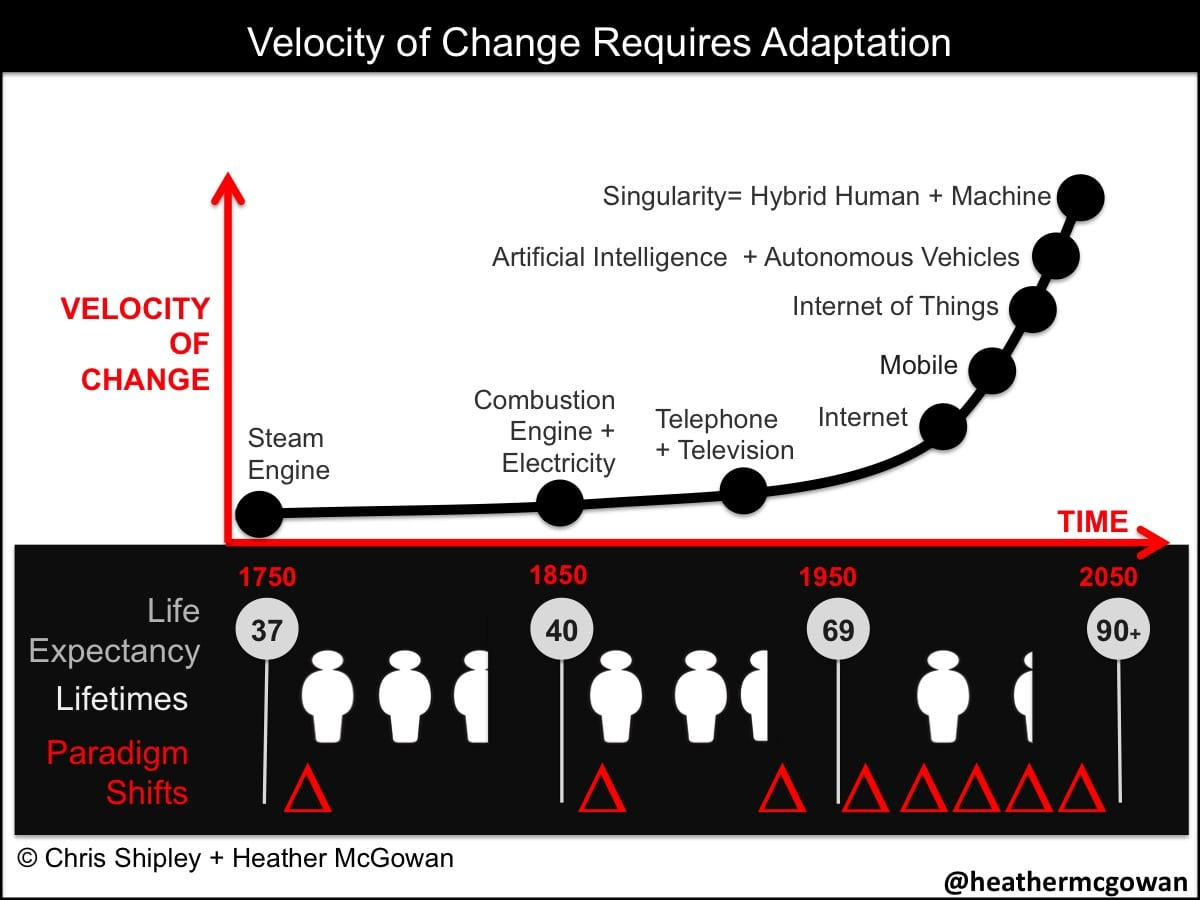How do we keep up with a future that’s always on the move?

“This idea about how things are changing is not new. Things have always been changing.”
So I heard in a Thinkers50 gathering with Howard Yu and Mark Greeven of IMD business school sharing their research on “future-fit” companies.
The difference now is the speed of change. We truly are in the Age of Acceleration I wrote about in my book. One of the visuals that represents this is from Heather McGowan below. In the 21st century we are living through more paradigm shifts and technological changes across a much longer life.

From companies to individuals to societies, we are racing to catch up to a future that is always on the move.
It can feel uncomfortable but in my years as an executive, consultant and coach, I’ve found the road to “future-fit”, involves iterating around the following:
Get a sense of where you are.
In order to know where you can go, it’s helpful to know where you have been and why you might want to go further.
At the beginning of every Future Proof cohort, we do a stock taking exercise about what is going on right now. Usually the status quo is pretty good for people who have the time and money to invest in a course like that. Why bother even changing?
Sometimes it is a drive to always go beyond your comfort zone. Who wants to be satisfied with the status quo?!
Other times it is a desire to create a new vision that you can see but no one else seems to notice.
Maybe you have the need to solve a problem looming on the horizon - my industry is in decline; we need to innovate…retirement is looming but I still want to work.
Getting a solid sense of where we are helps us figure out what better means.
Make the impossible, possible.
How do you imagine what’s possible beyond what you can see? Most people are so busy producing business as usual that they fail to see what is possible or reorient towards it.
As MIT economist and psychologist Per Espen Stoknes says, “Becoming aware of how limited our untrained mind is when imagining a different world is fundamental to forming a new narrative of the future.”
Training the mind (or the organization) includes making space to think about the impossible. Not to predict the linear path you are already on but to imagine some exponential future that is not even within the realm of possibility.
After all, if you said robot seals would be taking care of the elderly ten years ago, people would have laughed. Today these are a feature in many elderly care homes in Japan.
The best part - talking about what few of these moonshots get people excited reignites the passion for work and realization of what you can do.
Find your place in the future.
No dream becomes a reality without action. Those robot seals don’t just show up one day on the doorstep. Each part of the organization must think about what changes would be necessary in order to make the dream come alive.
Still, while you can plan the work and work the plan, there is one last element that this concept of change often overlooks - the sense of finding your place in the future. I mean this for yourself or, if you are leading an organization or team, it’s important that each person understands and feels that deep sense of belonging to what’s next.
Having a big goal aligned with one's values is an excellent way to ground yourself for all of those paradigm and technological shifts on the horizon.
Please let me know if you have a good story about adapting, overcoming resistance to change, expanding the benefits across the organization or upskilling employees to capitalize on emerging technologies. Let's connect.

